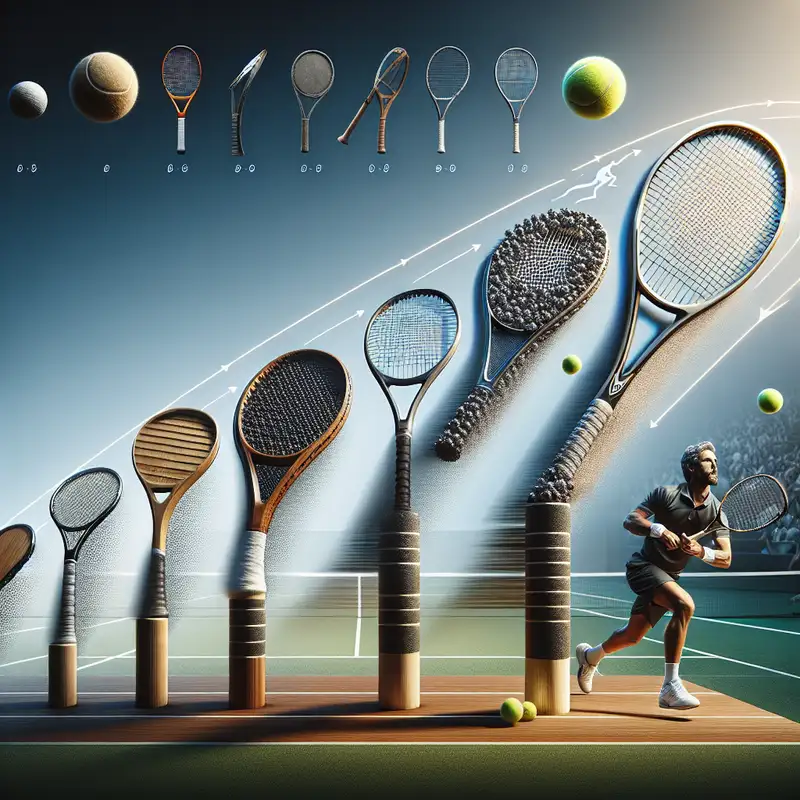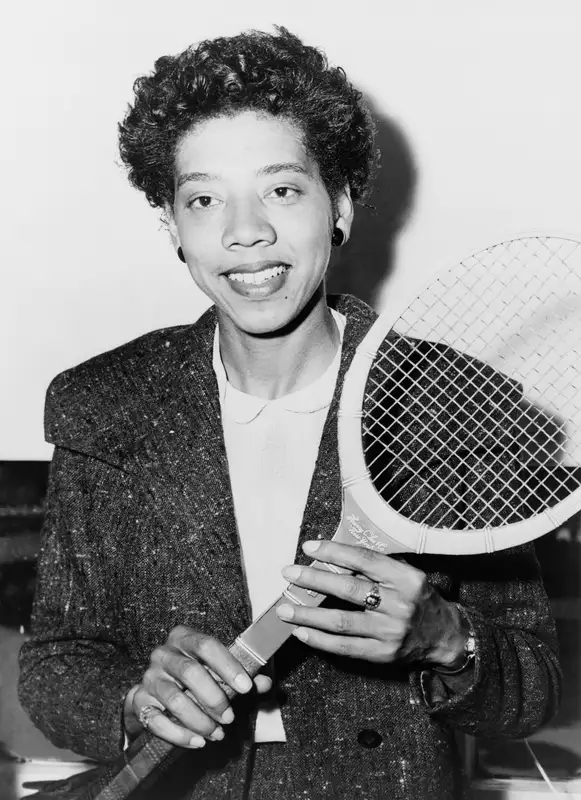The tennis racket is an extension of the player, and understanding its characteristics is crucial for optimizing performance on the court. Tennis racket weight and balance are two fundamental aspects that can significantly influence a player’s game. This article dives into the nuances of racket specifications, how to choose the right racket for your playing style, the scientific principles that govern racket performance, preferences of professional players, and tips for maintaining and adjusting your racket. Whether you’re a beginner or an advanced player, grasping these concepts can lead to more informed decisions and potentially improve your overall play.
Tennis racket weight and balance are essential factors that affect a player’s power, control, maneuverability, and stability. Understanding weight categories and the balance point of a racket can help players select equipment that complements their playing style. Frame stiffness and swing weight are additional specifications that interact with weight and balance to influence racket performance. Professional players often have specific preferences for racket weight and balance, which can vary depending on the type of court surface and their individual playing techniques. Regular maintenance and fine-tuning of racket weight and balance are important for sustaining optimal performance and knowing when to replace a racket.
Tennis rackets can be broadly categorized into three weight classes: light, medium, and heavy. Each class has a distinct impact on the game, influencing a player’s swing speed, power, and control. Lightweight rackets are typically easier to handle and can help players achieve faster swing speeds. They are often favored by beginners or those looking to improve maneuverability. However, they may lack the mass required for powerful shots. Medium-weight rackets offer a balance between power and control, making them a versatile choice for many players. They provide enough heft to hit with authority while still allowing for quick adjustments during play. Heavy rackets are preferred by some advanced players for their stability and power. The added weight can increase shot penetration and help in countering heavy hitters. Yet, they demand greater physical strength and can be more challenging to maneuver, especially for extended matches. The choice of racket weight is a personal decision that should align with your playing style and physical capabilities. Experimenting with different weights can help you find the perfect match for your game.
The balance point of a tennis racket is a crucial factor that determines its handling characteristics. It is the point at which the racket balances horizontally when suspended. Rackets are generally categorized as head-heavy, head-light, or evenly balanced, based on where this point lies in relation to the length of the frame. The balance point is measured from the butt of the handle and is usually expressed in millimeters. A head-heavy racket will have a balance point closer to the head, which can enhance power but may reduce maneuverability. Conversely, a head-light racket offers greater control and is easier to swing. Choosing the right balance depends on your playing style and what you aim to achieve on the court. It’s important to test different rackets to feel how the balance affects your swing and overall game.
The stiffness of a tennis racket frame can significantly affect a player’s feel and comfort during play. A stiffer frame generally results in more power but can also transmit more shock to the arm, potentially leading to discomfort or injury. Conversely, a more flexible frame can provide better control and a softer feel at the expense of some power. Swing weight is a measure of how heavy a racket feels when swung. It is not solely determined by the racket’s actual weight but also by how the weight is distributed along the length of the racket. A higher swing weight can increase power and stability but may decrease maneuverability. The choice between a high or low swing weight is a matter of personal preference and playing style. Players should experiment with different rackets to find the optimal balance for their game.
Before selecting a tennis racket, it’s crucial to understand your playing style, as it will significantly influence the type of racket that suits you best. Identifying whether you’re a baseline player, a serve-and-volley player, or an all-court player is the first step in choosing a racket that complements your game. All-court players require a versatile racket that balances power and control for a variety of shots. The right racket should feel like an extension of your arm, enhancing your strengths and compensating for any weaknesses. Understanding your playing style will not only help you in selecting the appropriate weight and balance but also in determining the string tension and grip size that will allow you to play your best tennis.
The relationship between the weight and balance of a tennis racket is a critical factor that affects a player’s performance on the court. A well-balanced racket can enhance a player’s swing mechanics and overall playability, regardless of its weight. However, the distribution of weight within the racket frame can significantly alter its characteristics. A head-light racket offers better control and is easier to swing, making it ideal for volleys and quick exchanges. An evenly balanced racket strikes a compromise between power and maneuverability, suitable for a wide range of playing styles. The choice of racket weight and balance should complement your playing style. A heavier racket can absorb more shock and provide stability, while a lighter racket allows for quicker movements and a faster swing speed. Experimenting with different combinations can help you find the perfect match for your game.
Customizing your tennis racket’s weight and balance can significantly enhance your performance on the court. Adding weight to specific areas of the racket can alter its balance, swing weight, and overall feel. This customization allows players to tailor their equipment to their personal playing style and physical capabilities. To adjust balance: Distribute weight evenly across the racket or focus on a specific area to shift the balance point. By fine-tuning the weight and balance of your racket, you can achieve a more personalized tool that complements your game and maximizes your potential. Remember, even small adjustments can make a significant difference. It’s essential to experiment with different configurations and practice with them to find the optimal setup for your style of play. Consult with a coach or a racket specialist if you’re unsure about how to proceed, as they can provide valuable insights and recommendations.
The weight of a tennis racket is a critical factor that affects both power and control. Heavier rackets, due to their mass, can generate more power on shots without the need for as much physical effort from the player. This is because the additional weight provides more momentum during the swing, which translates to a more forceful impact on the ball. However, control is often a trade-off with power. Lighter rackets offer better maneuverability, allowing for quicker adjustments and more precise shot placement. Players with a strong technique can leverage the agility of a lighter racket to enhance their control over the ball’s direction and spin. The ideal racket weight is one that complements a player’s physical strength and playing style, striking a balance between the power of heavier frames and the control offered by lighter ones. Choosing the right racket weight is essential for optimizing performance on the court. Players should consider their physical capabilities and the style of play they wish to develop when selecting a racket. Experimentation with different weights can help in finding the perfect match for an individual’s game.
The balance of a tennis racket is a critical factor that influences its maneuverability and stability during play. A head-heavy racket tends to provide more power and stability, especially for players with a compact swing. In contrast, a head-light racket offers greater maneuverability, allowing for quicker adjustments and more refined control at the net. Head-light rackets are often favored by advanced players who value precision and speed over raw power. The choice of balance should complement your playing style and the physical demands of your game. It’s not just about the racket’s characteristics; it’s about how those characteristics synergize with your movements and technique.
The materials used in the construction of a tennis racket significantly influence its overall performance characteristics. Graphite is the most common material, prized for its lightweight and stiff properties, which contribute to power and control. However, manufacturers often blend graphite with other materials to enhance specific attributes. Each material brings a unique set of properties to a racket. For instance, the addition of boron or Kevlar can make a frame more resistant to deformation and reduce vibrations, which can be beneficial for players with arm problems. Titanium and tungsten, on the other hand, are often used to fine-tune the balance of a racket, adding weight in specific areas to achieve the desired swing weight and stability without significantly increasing the overall mass.
In the world of professional tennis, racket trends often reflect the evolving nature of the game. Players are constantly seeking the perfect balance between power and precision, and their choices can influence amateur players worldwide. Frame stiffness is tailored to complement individual playing styles, with some players opting for more flexible rackets. The choice of racket among professional players is a blend of personal preference, technological advancement, and the physical demands of modern tennis. Manufacturers are closely collaborating with professionals to develop rackets that meet the specific needs of high-level play. This symbiotic relationship has led to innovations that trickle down to consumer models, allowing amateur players to benefit from the advancements in professional racket technology.
The choice of tennis racket can be crucial when adapting to different court surfaces. Each surface presents unique challenges and can significantly affect the ball’s speed and bounce. Clay courts, for example, tend to slow down the ball and produce a higher bounce, requiring players to use rackets that enhance their topspin and control. On the other hand, grass courts are faster and the ball stays lower, so players often prefer lighter rackets for quicker maneuverability. Hard courts offer a balance between clay and grass, demanding a versatile racket that provides both power and precision. Players must consider how the racket’s weight and balance complement the court surface to maintain their competitive edge. Understanding the interplay between racket characteristics and court surfaces is essential for players at all levels. By selecting the appropriate racket, players can optimize their performance and adapt their game to conquer the challenges posed by different playing environments.
The rackets used by professional tennis players often reflect their playing style and the demands of their game. Top players meticulously choose their equipment, ensuring that every aspect of the racket is tailored to enhance their performance on the court. For instance, a player known for a powerful serve might opt for a heavier racket to maximize energy transfer, while a baseline player who relies on speed and precision may prefer a lighter, more balanced racket. The choice of racket is a personal one, and what works for one player may not suit another. It’s a blend of art and science, with a dash of personal preference and the subtle influence of ongoing technological advancements.
To maintain your tennis racket in top condition, regular maintenance is essential. Proper care extends the life of your racket and ensures consistent performance on the court. Start by inspecting your racket before and after each play session, looking for signs of wear or damage. Keeping a maintenance log can help you track the condition of your racket over time and recognize when it’s due for a tune-up. Remember, a well-maintained racket not only performs better but also reduces the risk of injury by providing reliable grip and string tension. Don’t overlook the importance of this aspect of your equipment management.
Fine-tuning your racket’s weight and balance can significantly enhance your performance on the court. Adjustments should be made carefully to maintain the racket’s integrity and your playing style. Start by identifying areas for improvement in your game that could be affected by racket specifications. Experiment with lead tape to adjust the weight and balance. Place it at the 3 and 9 o’clock positions to increase stability or at the 12 o’clock position to add power. Consider the grip size and weight distribution. A heavier handle can counterbalance a heavier head, aiding in swing momentum. Fine adjustments to your racket can make a big difference in your play. It’s about finding the right balance that complements your natural strengths and compensates for any weaknesses. Remember, even small changes can alter the feel and response of your racket. It’s essential to test any modifications during practice sessions before competing.
Deciding when to replace your tennis racket can be as strategic as the game itself. Performance decline is the most telling sign that it’s time for a new racket. This can manifest as reduced power, less control, or discomfort during play. It’s essential to recognize the signs of wear that affect your racket’s effectiveness. Regular assessment of your racket’s condition is crucial for maintaining your competitive edge. If you’re consistently making adjustments and not seeing improvements, it might be time to invest in a new racket. Consider the lifespan of your racket’s materials. Over time, even the most durable composites can lose their intended properties, leading to a decline in performance. If you’re a frequent player, you may need to replace your racket more often than a casual player. Remember, a fresh racket can bring new life to your game, ensuring that your equipment doesn’t hold you back from achieving your best performance on the court.
Understanding the weight and balance of a tennis racket is crucial for players at all levels. The right combination can enhance your performance, providing the perfect blend of power, control, and maneuverability. While heavier rackets offer stability and power, lighter ones allow for quicker swings and better control. The balance point also plays a significant role, with head-heavy rackets aiding in power shots and head-light rackets favoring control and net play. Ultimately, the ideal racket is one that complements your playing style and physical capabilities. It’s worth investing time to experiment with different rackets and configurations to find your perfect match. Remember, the most expensive or advanced racket won’t necessarily make you a better player; it’s about finding the right tool that works in harmony with your game.




